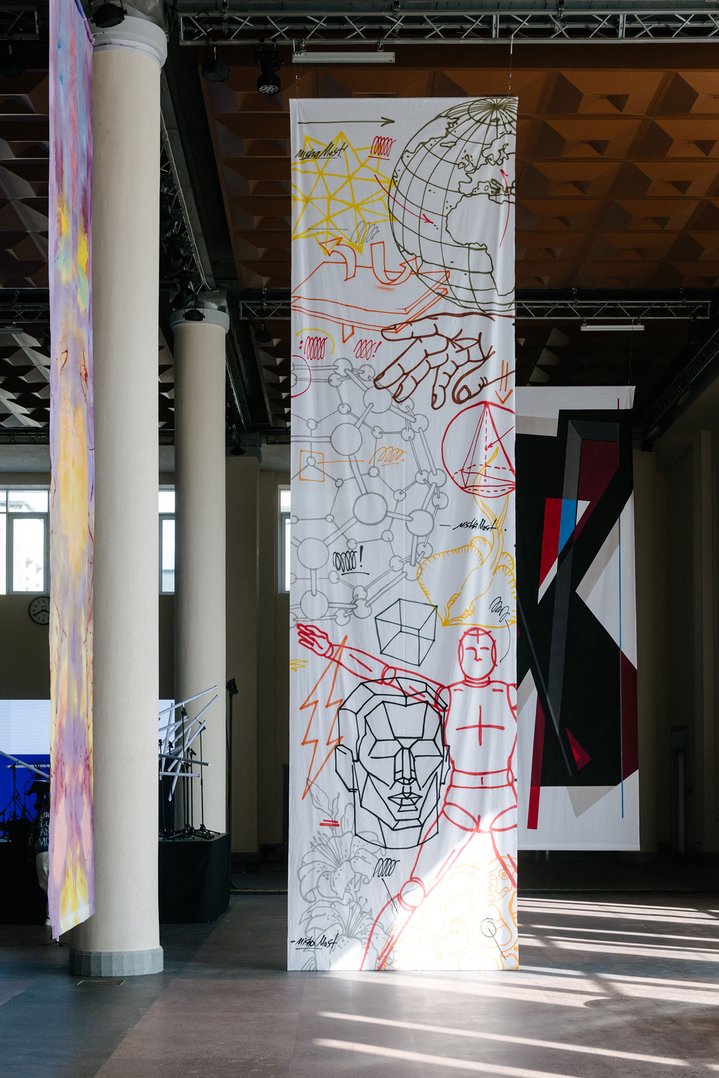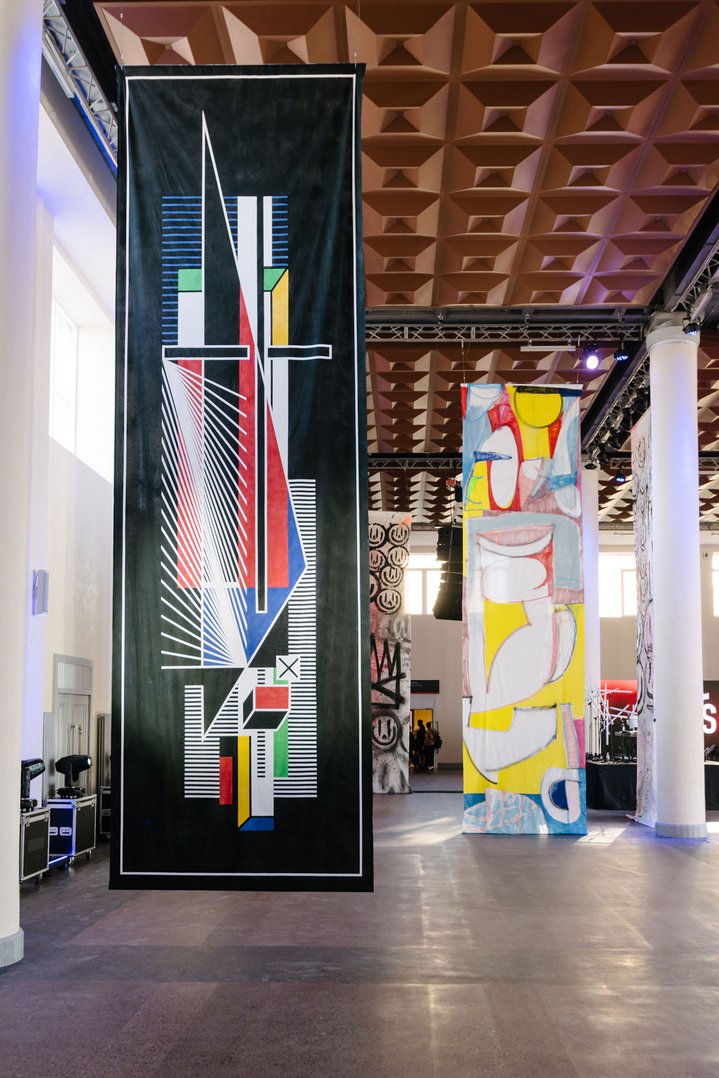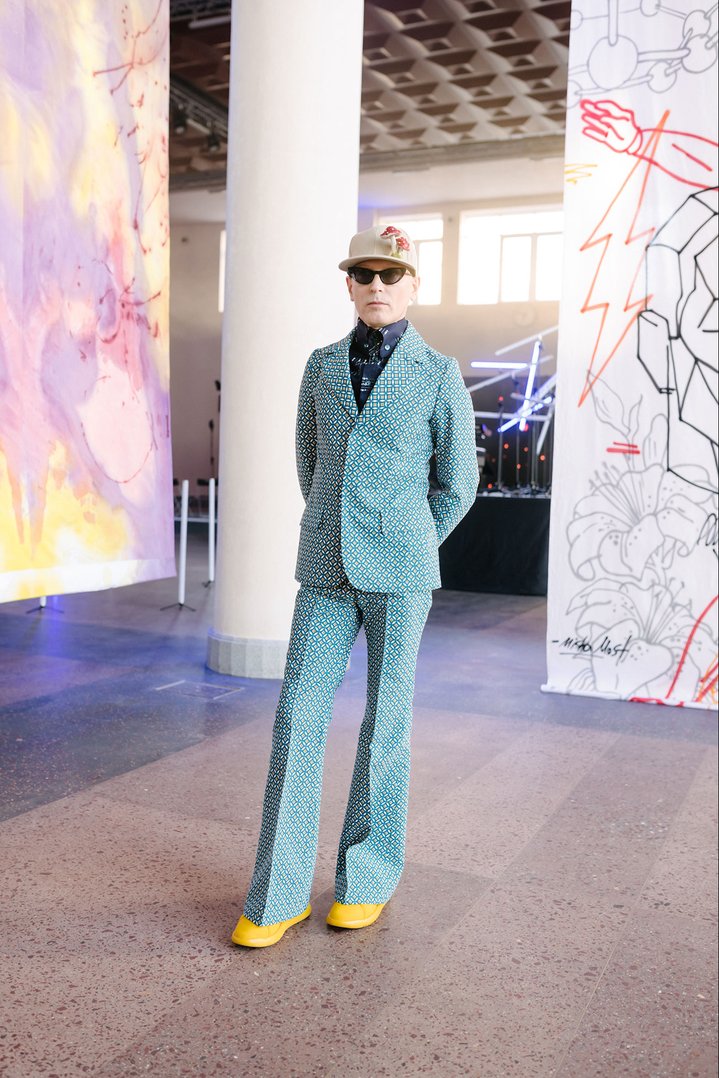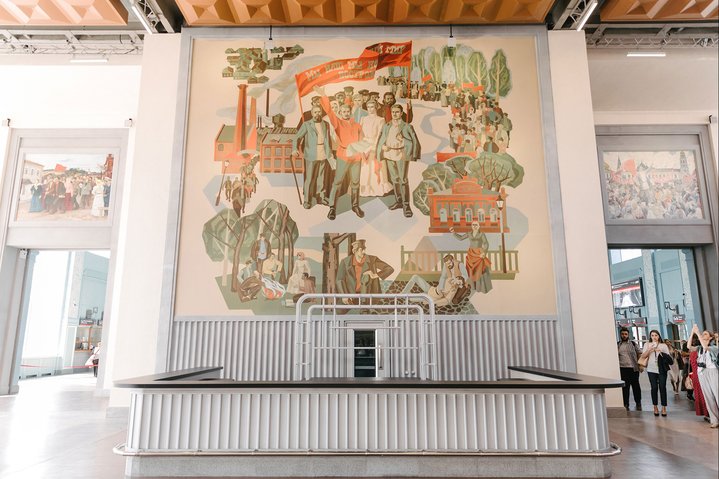Ivanovo Station. Central Hall. Photo by Oleg Maslov
Art behind the railway tracks
A new art space has opened in Ivanovo’s central train station, a recently restored 1930s landmark building. The Art Station comes along with an artist residency and will house specially commissioned artworks and performances.
Ivanovo, a city 300 kilometres to the east of Moscow, knows how to make a first impression. You cannot miss its biggest landmark, even if you are not looking for it. Trains coming from Moscow terminate in Ivanovo’s central railway station, a constructivist monument designed by the architect Vladimir Kaverinsky in the 1930s. It was reconstructed twice in the 1950s and 1980s. As part of a much-acclaimed renovation in 2020, the architects tried to blend harmoniously all three phases of the building’s life, while incorporating modern amenities into the interior. This 9,000 sq. metre structure, with grand halls and imposing columns, looks completely out of place in what is a quiet city of just 400,000 inhabitants. Its original creators envisioned Ivanovo as an industrial capital of the country, yet it never lived up to these expectations. Today, there are not enough passengers to fill the building, so it looks half-deserted most of the time. The local authorities sought to devise a new purpose for part of the station and now its smaller hall is an art exhibition space. The idea behind the ‘Art Station’ project is to connect local craft heritage with contemporary art practices, experimental fashion and design.
Ivanovo is both nicknamed ‘The City of Brides’ and a ‘Russian Manchester’, with good reason. From the 19th century, it was the main centre of the country’s textile industry. Here, famed Ivanovo chintzes were manufactured and many generations of seamstresses bent tirelessly over their sewing machines. Many of the factories founded back then, and mostly staffed with female workers, still operate today. The local Museum of Chintz boasts an amazing collection of 1920s printed fabrics with propaganda patterns designed by prominent avantgarde artists, such as Varvara Stepanova (1894–1958) and Liubov Popova (1889–1924). Moscow’s fashion designer and curator Jacob Yakubov first came to the city in the early 2010s: he was searching for skilled seamstresses to realise his designs. Recently, he was appointed a curator of the new art space by the regional governor. ‘Art Station’ is funded by a Russian presidential grant for artist residencies. And so, the space is promoted as the “first ever artist residency inside a railway station”, a slogan with a not-so-slight touch of the absurd. Thankfully, artists who are invited there do not have to sleep on benches inside the station. While the residential accommodation in a nearby former factory building is not ready yet, the artists can stay at hotels in the city. “We have three goals,” Yakubov explains. “The first is to bring artists here, so they can find inspiration in the city’s industrial heritage and in modern textile-making technologies. The second is to encourage collaboration between factories and artists. The third is to show young local artists that they don’t have to move to Moscow or St. Petersburg in order to build their careers, to provide them a space for their self-expression at home.” The curator is particularly interested in artists whose practice is craft based.
The inaugural exhibition called ‘Fabric of the Future’ and curated by street artist Misha Most (b. 1981) brought together seven street artists and art groups from different parts of Russia. One of them, MAX 13, is a native of Ivanovo. They spent four days spraying their works onto eight-metre long stretches of un-primed canvas, given by the local textile factory ‘Krasnaya Talka’. Some of the works, like those by the ‘Aesthetics’ group, allude to the building’s Constructivist legacy, while Misha Most himself stuck to his signature upbeat sci-fi imagery. Hanging from the high ceiling of the stately hall, these enormous canvasses are a powerful presence: silent and solemn, like decorations for some mysterious ceremony, which will never take place anywhere, but in visitors’ imaginations. According to Yakubov, several of the invited artists have already received offers for collaboration from local factories. During the second stage of the project, scheduled for October, these canvasses will be upcycled to one-off pieces of designer clothing. The curator plans to donate them to local museums.
Fabric of the Future
Ivanovo, Russia
Part I: August 6 – September 6, 2021
Part II: October 2021














